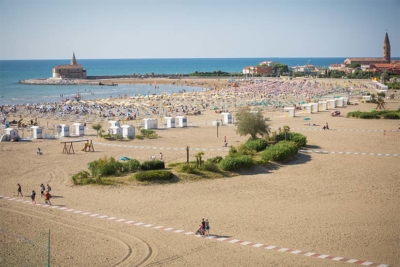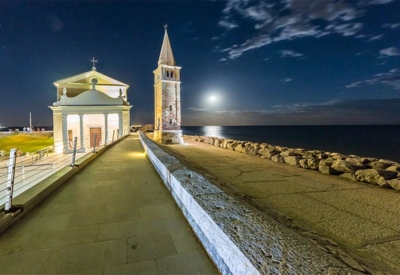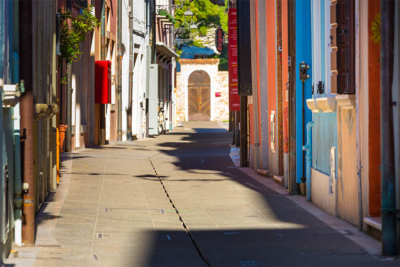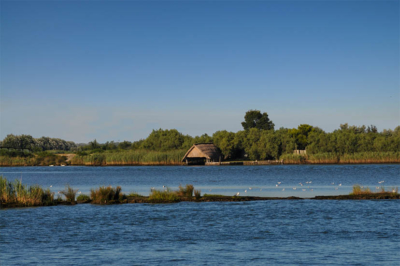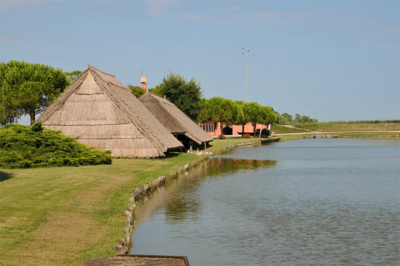CAORLE
A golden sandy beach gently sloping down to the sea, a lagoon (and its casoni – fishermen’s houses) where time seems to have stood still, the historic centre where you can still see the thousand-year history of the city and its inhabitants: these are some of the main features that make the city of Caorle one of the most popular tourist destinations in the Upper Adriatic.
Caorle is an ancient fishing village with brightly coloured, traditional Venetian-style houses, that once overlooked the ancient canals, which are now silted up. This is why Caorle is also known as ‘The little Venice”!
The oldest and most important building in the city is the cathedral, dedicated to St Stephen Protomartyr and erected, according to tradition, in 1038. Opposite the cathedral is a splendid, stand-alone 11th-century cylindrical bell tower, rising above the sea like a lighthouse. The interior has recently been renovated and opened to visitors. If you head towards the staircase from Piazza Vescovado, you can access the dam, described as one of the most beautiful walkways in the Upper Adriatic. You can see real works of art sculpted on heavy trachyte boulders by Italian and international artists, thanks to the ScoglieraViva sculpture association.
At the end of the breakwater, where the Levante (eastern) beach begins, on a promontory in the Adriatic Sea, is another of the town’s symbol: the Church of the Madonna dell’Angelo, a place of devotion that is very dear to the people of Caorle who worship the Virgin Mary there. Inside is a marble throne on which, legend has it, the statue of the Virgin Mary was found floating on the water. Every five years, the people of Caorle and further afield renew their devotion to Mary with a Procession on the Sea, attended by thousands of believers.
Fishing and traditions
Despite the recent development of tourism, Caorle has been able to preserve its characteristic appearance as a seaside town. The sole livelihood of the people of Caorle for thousands of years – fishing – still takes place and allows the resort to offer locally caught produce to residents and visitors alike, prepared according to traditional recipes. These include Caorle octopus, white scallops and clams. In the afternoon, you can see the fishermen unload the catch from their boats to take it to the new Fish Market, where wholesalers and individuals can buy it. This is a much-awaited moment not only for Caorle residents, but also for tourists, who love to see and ‘touch’ the delicacies that the sea of Caorle offers up close. Fishing was practised until the early 1900s in the Caorle lagoon, one of the largest in the Upper Adriatic and a protected natural area, a Site of Community Importance, where flora and fauna have the ideal environment to live and breed. Here you can still see, and visit, the casoni, typical homes made of wood and marsh cane, where fishermen and their families spent a large part of their lives while working.
A bike or boat tour is the ideal way to discover this wonderful landscape that Ernest Hemingway, the US Nobel Prize-winning author (1954) loved so much. His days spent hunting on the lagoon inspired several pages of his novel “Across the River and Into the Trees” (1950).
If you prefer to travel by boat, you can rent one, even without a licence, or you can board the Caorle motorboat or the Serenissima bragozzo and enjoy a couple of hours surrounded by nature and a visit to a typical casoni.
The Beach
Caorle has 18 km of beachfront! This is in the main town and in Porto S. Margherita, Lido Altanea, Duna Verde and Brussa (the largest natural beach on the Italian Upper Adriatic, behind which is the Vallevecchia natural oasis, a site of considerable environmental interest). The beach offers a wide range of services, from babysitting to free sports for all ages, a space for little four-legged friends and VIP areas, services for the differently-abled and peace of mind, thanks to security staff and ever-present first-aiders.
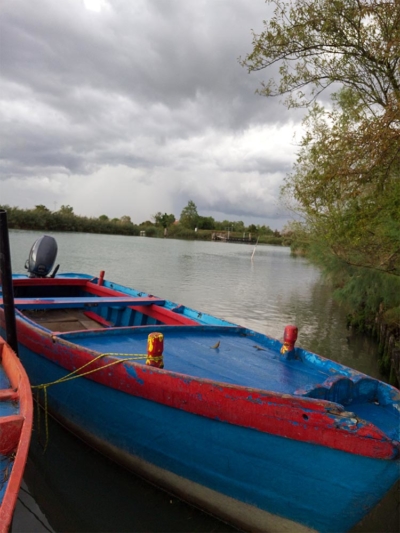
Worth Visiting
The cathedral and bell tower of the 1000-year-old town centre Piazza Vescovado
The Church of the Madonna dell’Angelo on the seafront
Caorle Liturgical Museum, Piazza Vescovado (in the cathedral)
Scogliera Viva, an open-air museum on the seafront
Don’t Miss
Valle Vecchia, a site of community importance on Caorle’s Portogruaro Brussa provincial road
The rural village of Ca’ Corniani on provincial road 62
Parco del Pescatore in Via Traghete, Caorle
The Fishermen’s casoni in the Falconera area

